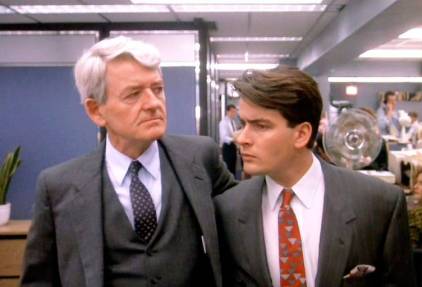
Kris Jenkins had it. Michael Jordan had it…many times over. Even Jeff Spicoli had it, if you consider Mr. Hand’s desire for Spicoli to merely show up for class, even if having pizza delivered to class wasn’t part of the deal.
What is “it”, you ask? Follow through, and its twin, follow up.
I’m not one to rant, though I will if given the opportunity. It depends on the topic. As you can see, I’m writing about two basic, yet shockingly absent, keys to…well just about anything: follow through and follow up. Ok, so this is about to shift into a rant. I do so unapologetically, as I believe you’ll agree that it’s rant-worthy.
Before I jump in with both feet, I should point out that none of what follows is fabricated for the sake of the post. I’m a storyteller, and love a good piece of fiction as much as the next person. That said, this post is, unfortunately, non-fiction masquerading as horror, grotesquely formed with a seemingly endless supply of appalling rubbish. Commence rant.

Obligatory Thor GIF via Giphy
Sorry Yoda: Only “Do”, Never “Do Not”
Raise your hand if you’ve heard the expression, “Do what you say you’re going to do”. Yeah, me too. And so has just about everyone else, from Generation Z to Baby Boomers. So, if we’ve all heard this and know it’s meaning, why is the action part – “do” – so glaringly lacking?
Follow through and follow up are two keys to success in both your both personal and professional lives. As a teenager, you proudly carried the flag of anti-tyranny rebellion, protesting any request (all of which were, like, totally unreasonable) from your parents. You learned what follow through means when you found yourself “unfairly” grounded. “I’ll never treat MY kids like that,” you growled as you skulked away to your room.
Fast forward to your adult life. Maybe you’ve married and produced some kids. Life gets busy, but not too busy to forgo disciplining your kids for whatever treasonous act they’ve committed (like leaving dishes on the dinner table). As you swing the hammer of discipline like Thor, and hear your hellion of a child shout, “I’ll never treat MY kids like that,” a feeling of déjà vu sweeps over. Wait, what’s that? Now I’m showing my kids what it means to follow through?
In your personal life, follow through means standing behind something you say. “If you don’t do your homework, you lose (insert device).” Few threats draw a line in the sand like that of taking away your kid’s device(s). It’s also the line that is challenged more than raptors testing the fences in Jurassic Park. Fail to follow through on this promise and you’ll end up with a T-Rex sized problem.
Always Be Closing (Following Up/Through)
Follow through and follow up in business and your professional life are two skills that, while not hard to do in reality, seem to be as fleeting as the evidence supporting the existence of the elusive Sasquatch. Sidebar: I keep an open mind…and let’s leave it at that. But I digress.
As Chris Farber once wrote, and something I strongly believe: EVERYONE in a company is in sales/business development. What about development or compliance, you say? Whether it’s building new functionality or managing risk and regulations, every team within a firm has a sales responsibility in that all ultimately serve clients. Fail to follow through on a client request, and whoosh, kiss that client (and likely others) goodbye. Flip side…deliver what they want and make them happy, and they’ll continue to buy your products or services.
Follow through and follow up are core competencies for successful business developers, across a wide range of roles, including corporate sales, account management, relationship management, and recruiting. Most sales take place at, or after the fifth contact with a prospect, so why not continue to follow up with your prospect until at least that point? If you tell your prospect you’ll provide something, you’d better follow through. Do it.
Filling the Gap
In the first sentence above, I mentioned recruiting. In many posts and updates I read on LinkedIn, and in conversation with colleagues, a common theme arises: a lack of follow-up from a recruiter. Someone I know well has been approached by dozens of recruiters. After an initial contact and perhaps an introductory call, only a handful followed up or followed through. The trail ran cold with no further contact whatsoever, despite follow-up by my friend. That’s no way to run a people-focused business.
Fair or not, this assessment is obvious, given the visibility of the recruiting profession. It’s a sales, business development, and relationship management role that sits in clear view, considering the number of people looking for new gigs. How hard is it to fire off a quick note to show someone they matter?
I follow up or follow through with whatever I’ve been asked to deliver, and I do so in a reasonable amount of time. What’s reasonable? Depends. One key to successful follow up and follow through: setting proper expectations. This is a topic for another post, but suffice it say: if you don’t manage expectations, you’ll find it tough to follow up or follow through timely.
Do: follow through and follow up. Don’t: be a Sasquatch.












